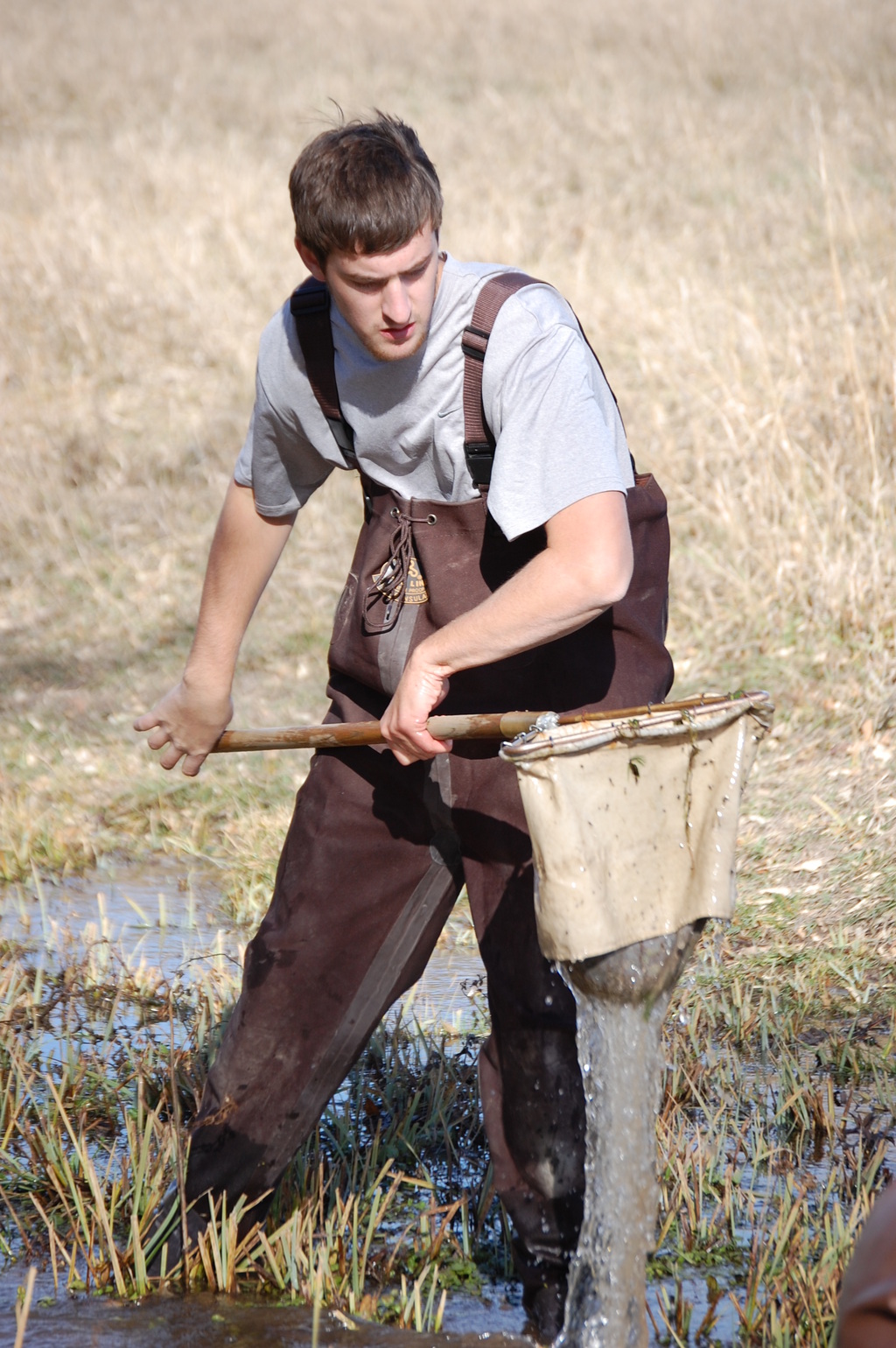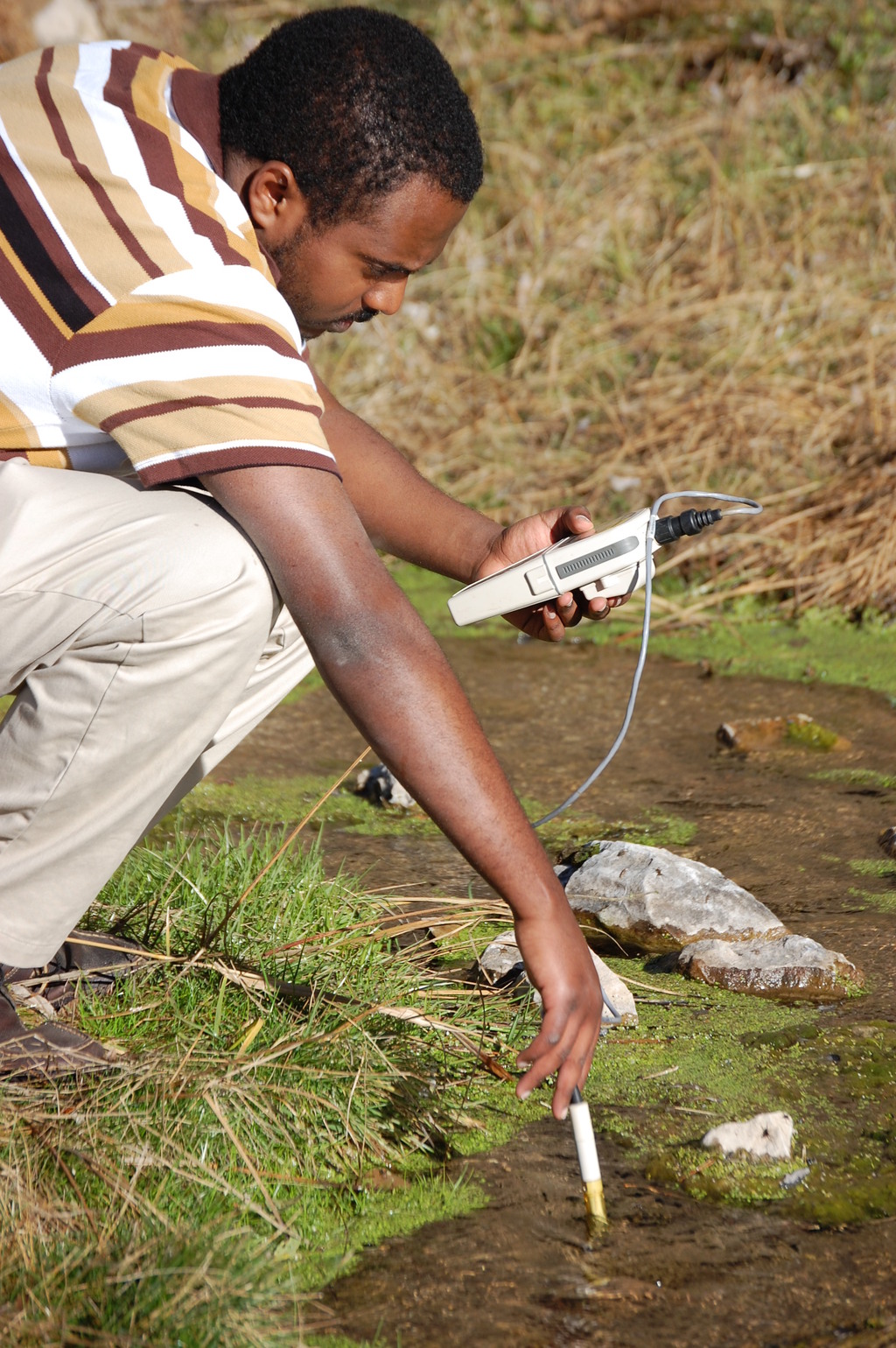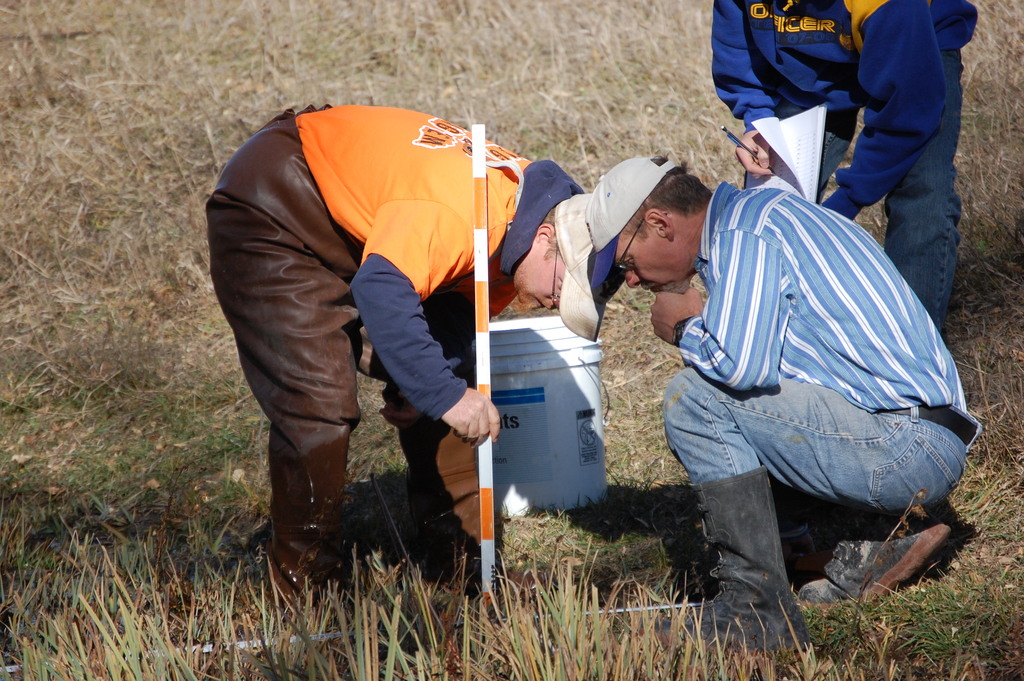Watershed Team continues Chadron Creek study

Ten Chadron State College students and four professors continued their ongoing study of Chadron Creek’s resources Saturday, Nov. 7. At six sites along the creek, the Watershed Team collected data on range quality, water flow rate, invertebrates, chemical properties and bacteria. The team is in its fifth year of monitoring the sustainability of Chadron Creek’s natural resources.
Austin Horn, a junior from Sidney, is the lead student of the Watershed Team. He replaced Jennifer Balmat, graduate student, who was the lead in past years.
“We have the same sampling events as in the past, except for fisheries,” Horn said.
The team, also known as P3, which stands for People, Prosperity and the Planet, is made up of students from across disciplines. It traveled to Washington, D.C., in 2008 to compete in the Environmental Protection Agency’s Sustainable Design Competition, a student-led P3 research program. The team will not attend the contest this year.
“In the future, we would like to have a public day to present the team’s findings locally and have public input as part of the process,” said Dr. Chuck Butterfield, CSC professor of applied sciences. “Potentially, we would like the team present its research at the Nebraska Academy of Sciences in Lincoln, like they did in 2008.”
Horn and Ethan Teter, a sophomore from St. Paul, used a device called a modified-step-point to collect data about the degree of soil cover and an estimation of species composition of grazing land near the creek’s banks. They also collected data on species of birds present and evidence of other wildlife at the sites.
Brice Bultmann, a junior from Yutan, and Joe Reedy, a sophomore from Vale, S.D., collected physical watershed data on stream cross section, bank angle, water velocity and stream orientation. It is Bultmann’s second year with the team.
“This year the water rates are higher because of the run off from the snow storm,” Bultmann said.
Dr. Mike Leite, CSC professor of geoscience, said “The team’s four years of data shows large variations in flow, a function of intermittent drought and some wetter years.”
Brady Baker, a freshman from Kimball, collected samples from stream habitats with a dip net to count the diversity of invertebrates at each site.
Alula Mazengia, a senior from Addis Ababa, Ethiopia, led the chemistry group in measuring temperature, dissolved oxygen, pH, total dissolved solids and conductivity. He was assisted by Sam Tetteh, a graduate student from Ghana, and Abenezer Dejene of Ethiopia. Mazengia also collected phosphate and nitrate data for his senior research project. Water samples were collected for the microbiology group. Dr. Ann Buchmann, CSC assistant professor of biology, and Luke Wright of Hamlet planned to check the samples for fecal coliform bacteria.
“We will spend a few hours in the lab processing the water samples for E. coli contamination,” Buchmann said. “In the past, one site has shown to have more E. coli and we are not sure why. We will continue to monitor it,” she said.
The Watershed Team has a collection day at Chadron Creek in the fall and spring each year. They have regular meetings at 4 p.m. Mondays in Room 132 in the Math and Science Building. More information about the Watershed Team can be found at watershedteam.org.
Category: Campus News



